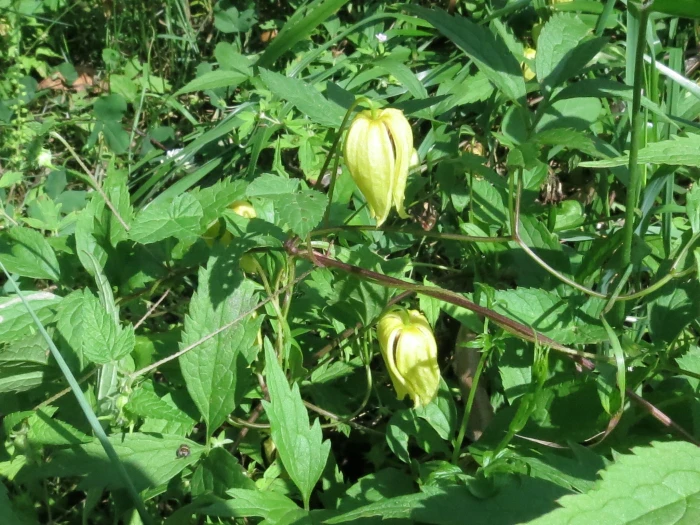Korean Clematis
(Clematis serratifolia)
Korean Clematis (Clematis serratifolia)
/
/

Repina Tatyana
CC BY 4.0
Image By:
Repina Tatyana
Recorded By:
Copyright:
CC BY 4.0
Copyright Notice:
Photo by: Repina Tatyana | License Type: CC BY 4.0 | License URL: http://creativecommons.org/licenses/by/4.0/ | Rights Holder: Repina Tatyana | Publisher: iNaturalist | Date Created: 2020-09-04T15:10:28-07:00 |




















Estimated Native Range
Climate Requirements
| • Precipitation | 21" - 67" |
| • High Temp. | 63°F - 85°F |
| • Low Temp. | -25°F - 36°F |
Summary
Clematis serratifolia, commonly known as Korean clematis, is a deciduous climbing vine native to forest margins, slopes, and scrub areas in the Russian Far East, Manchuria, and the Korean Peninsula. It typically reaches 10 to 13 feet in height and can spread out to cover a similar width if given support. The vine is characterized by its serrated leaf margins and bears small, nodding, yellow flowers from late summer to early autumn. The flowers are subtly showy due to their unique shape and are followed by highly ornamental, fluffy seedheads that persist into winter.
Korean clematis is valued for its fragrant, citrus-like blooms and decorative seedheads, which add textural interest to the garden. It is often used to adorn trellises, walls, and fences, and can also be planted in borders for vertical interest. This clematis prefers well-drained soils, tolerating both calcareous and acidic conditions, and requires regular watering, especially during dry periods. It thrives in full sun to part shade and benefits from a layer of mulch to keep the roots cool. Pruning group 3 applies to this species, meaning it can be cut back hard in late winter to early spring to promote vigorous new growth. Gardeners should be aware that Clematis can be affected by Clematis wilt, a fungal disease that causes sudden wilting and death of stems.CC BY-SA 4.0
Korean clematis is valued for its fragrant, citrus-like blooms and decorative seedheads, which add textural interest to the garden. It is often used to adorn trellises, walls, and fences, and can also be planted in borders for vertical interest. This clematis prefers well-drained soils, tolerating both calcareous and acidic conditions, and requires regular watering, especially during dry periods. It thrives in full sun to part shade and benefits from a layer of mulch to keep the roots cool. Pruning group 3 applies to this species, meaning it can be cut back hard in late winter to early spring to promote vigorous new growth. Gardeners should be aware that Clematis can be affected by Clematis wilt, a fungal disease that causes sudden wilting and death of stems.CC BY-SA 4.0
Plant Description
- Plant Type: Vine
- Height: 8-12 feet
- Width: 2-12 feet
- Growth Rate: Moderate
- Flower Color: Yellow
- Flowering Season: Summer
- Leaf Retention: Deciduous
Growth Requirements
- Sun: Full Sun, Part Shade
- Water: Medium
- Drainage: Medium
Common Uses
Bee Garden, Border Plant, Butterfly Garden, Low Maintenance, Rock Garden
Natural Habitat
Forest margins, slopes, and scrub areas in the Russian Far East, Manchuria, and the Korean Peninsula
Other Names
Common Names: Korean Clematis, Chi Ye Tie Xian Lian, Saw-Toothed Clematis, Yellow Clematis
Scientific Names: Clematis serratifolia, Clematis eriopoda var. wilfordii, Clematis intricata var. serrata, Clematis intricata var. wilfordii, Clematis orientalis var. serrata, Clematis orientalis var. wilfordii, Clematis serrata, Clematis serratifolia f. wilfordii, Clematis sibiricoides
GBIF Accepted Name: Clematis serratifolia